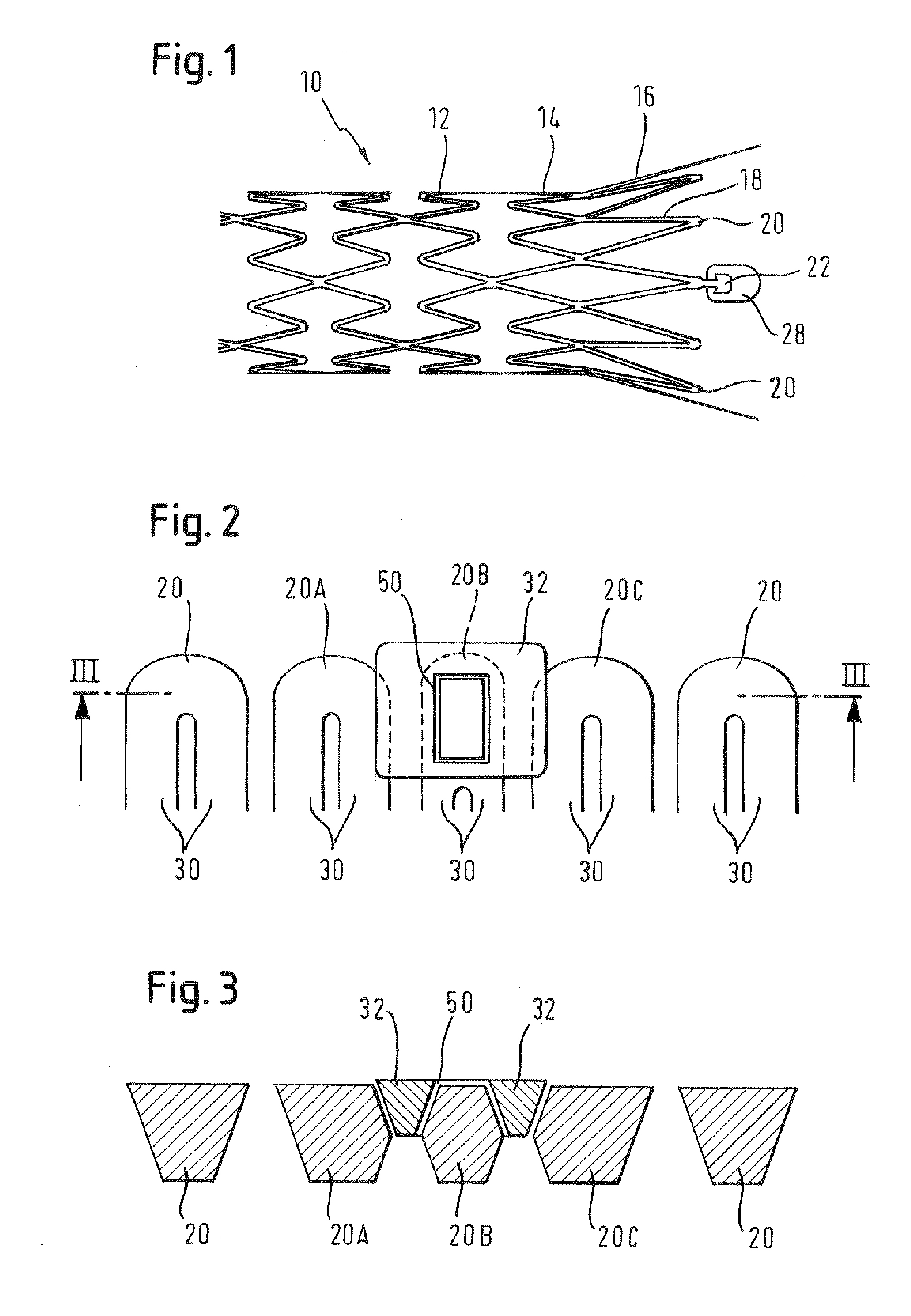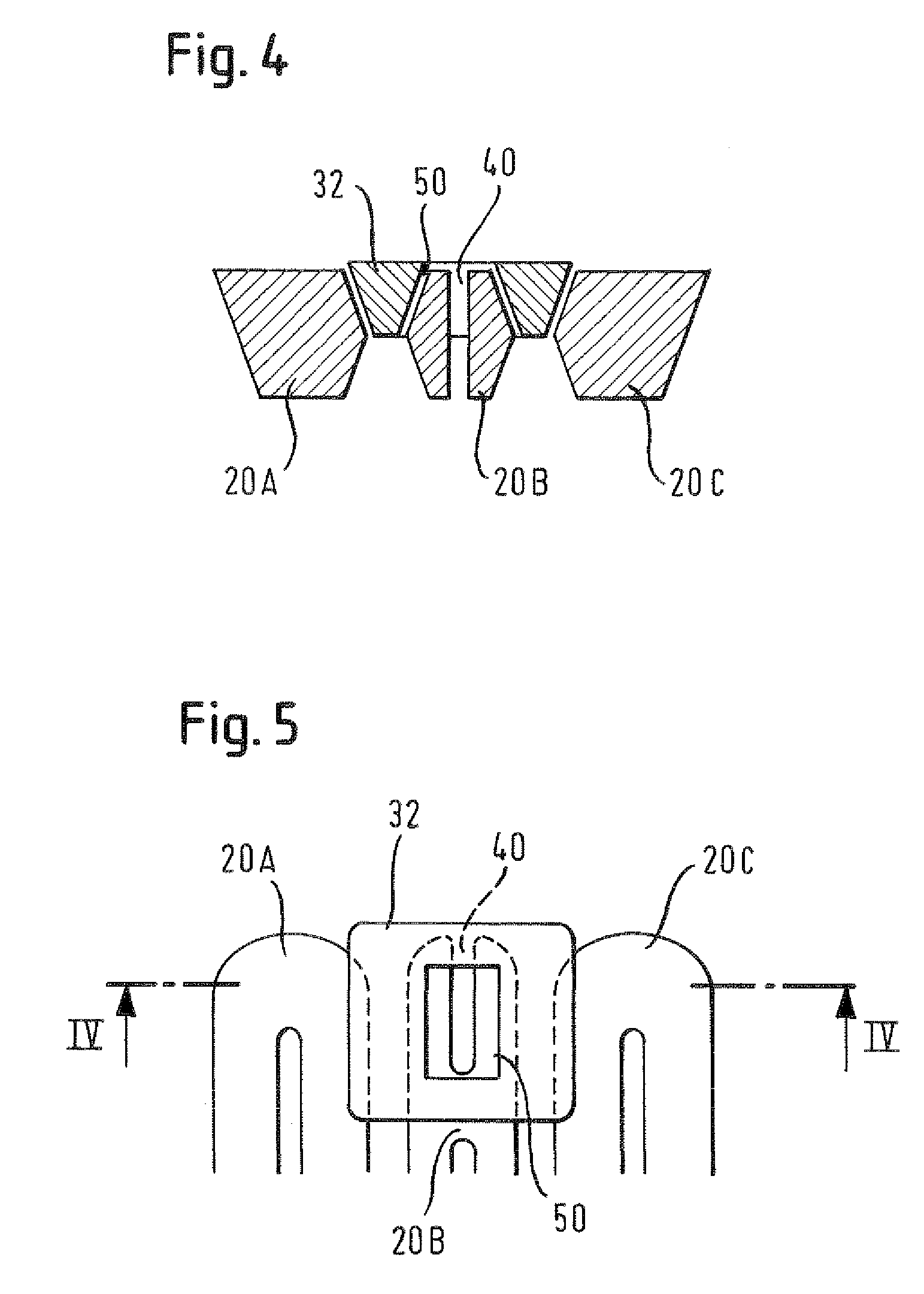Stenting Ring with Marker
a marker and stent technology, applied in the field of stents, can solve the problems of sacrificing the stenting force and not being attractive to stent designers, and achieve the effects of enhancing the bond between the stent and the marker, enhancing the luminexx technology, and being secure and precis
- Summary
- Abstract
- Description
- Claims
- Application Information
AI Technical Summary
Benefits of technology
Problems solved by technology
Method used
Image
Examples
Embodiment Construction
[0020]Looking first at FIG. 1, this is part of a drawing taken from applicant's WO 02 / 15820 and the reader is referred to that WO document for a detailed description of the content of the Figure. A self-expanding stent 10 of nickel-titanium shape memory alloy exhibits zig-zag stenting rings, such as 12 and 14, that are shown in FIG. 1 in an expanded configuration, after deployment in bodily tissue. The end ring 16 has longer struts 18 than our present inner rings 12 and 14 and, where two end struts 18 come together at nodes 20 is the axial extent of the stent lumen. Cantilevered from just 4 of the 12 end nodes 20, on a carrier portion 22, is a radiopaque tantalum marker spoon 28. As explained in the WO document, when the stent 10 is in the radially compact delivery disposition, the ring of 4 tantalum marker spoons 28 cantilevered on the end of the stent forms virtually a full circle of tantalum metal in the catheter delivery system for the stent, rendering it relatively easy for the...
PUM
 Login to View More
Login to View More Abstract
Description
Claims
Application Information
 Login to View More
Login to View More - R&D
- Intellectual Property
- Life Sciences
- Materials
- Tech Scout
- Unparalleled Data Quality
- Higher Quality Content
- 60% Fewer Hallucinations
Browse by: Latest US Patents, China's latest patents, Technical Efficacy Thesaurus, Application Domain, Technology Topic, Popular Technical Reports.
© 2025 PatSnap. All rights reserved.Legal|Privacy policy|Modern Slavery Act Transparency Statement|Sitemap|About US| Contact US: help@patsnap.com



